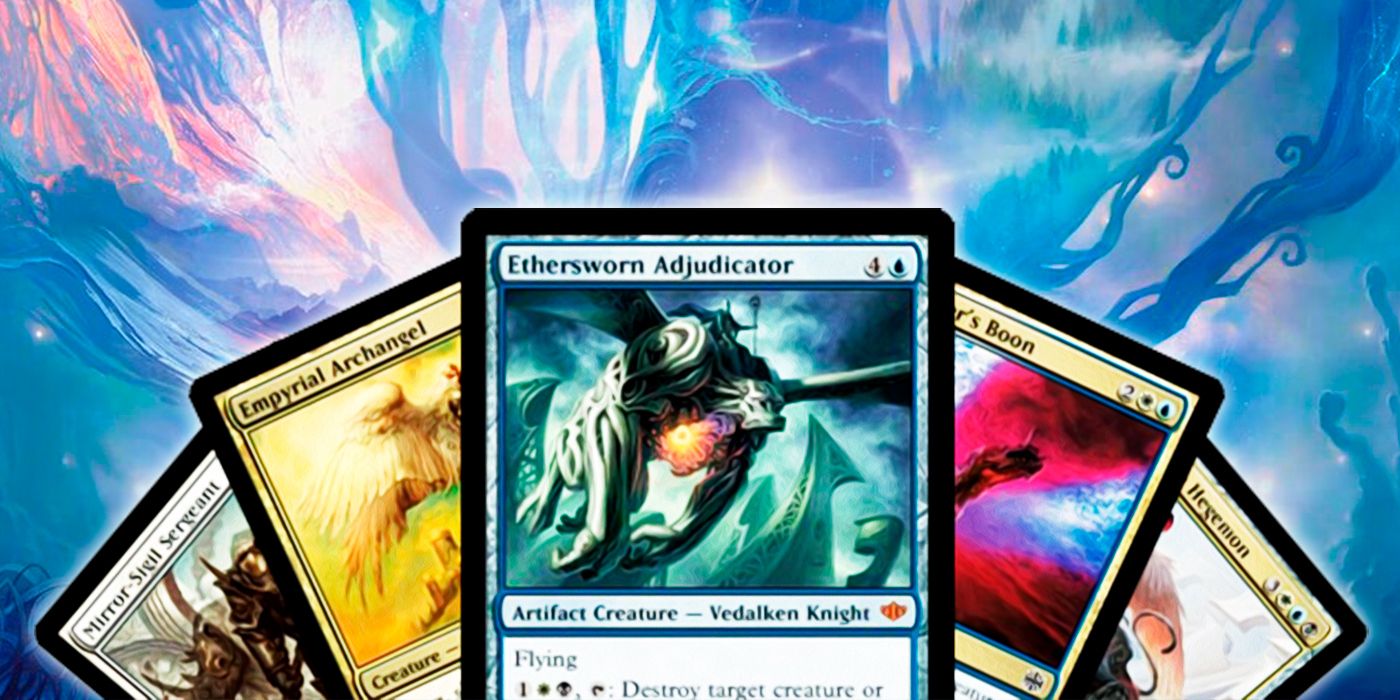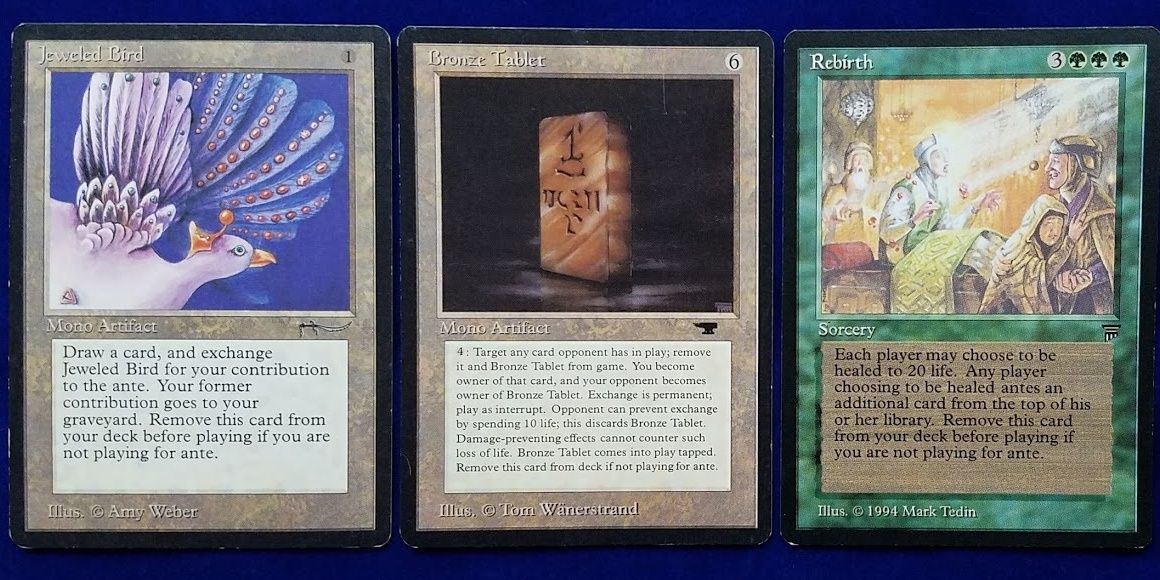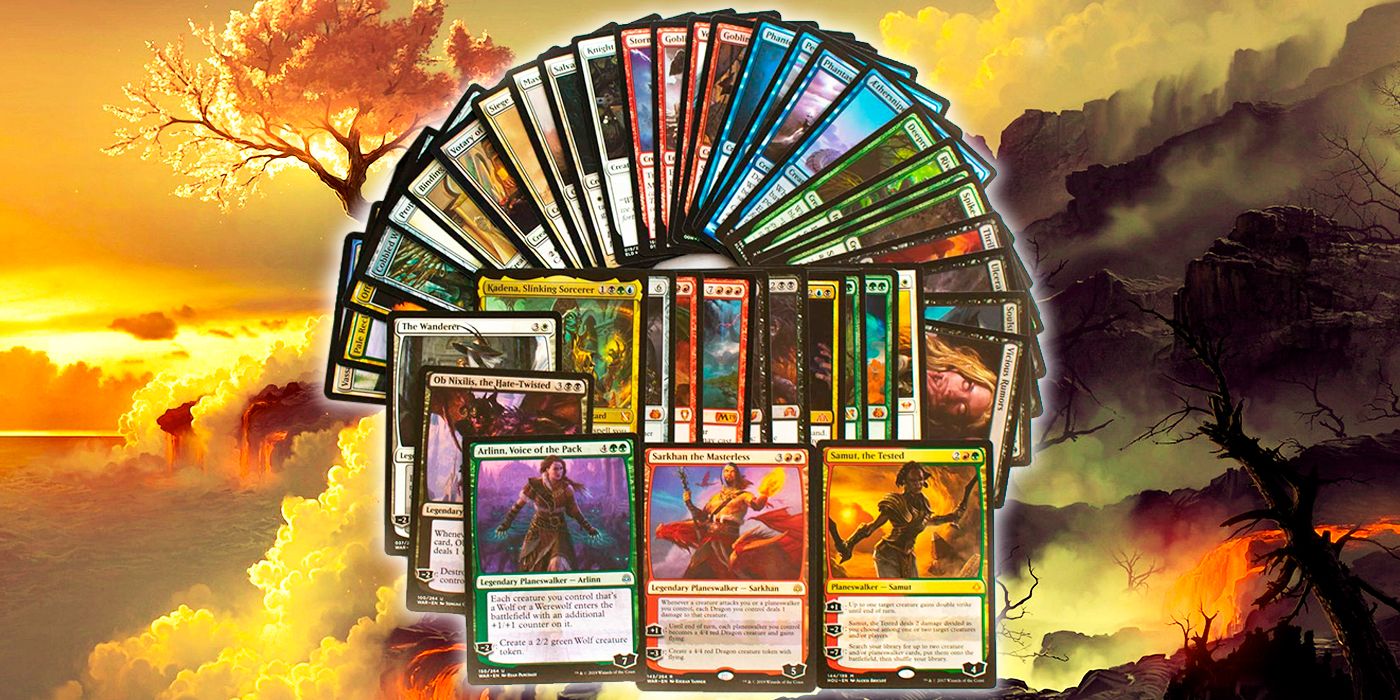Magic: The Gathering stands as the world's first-ever trading card game, and it's hugely popular and successful today, from the competitive Modern format and Commander to casual kitchen table Magic and booster draft Limited. However, it all had to start somewhere, and in the mid-1990s, Wizards of the Coast gambled with a mechanic that wouldn't stand the test of time.
A handful of early Magic: The Gathering cards involved the ante rules, which essentially encouraged players of any age to gamble with their cards to add an extra dimension to the game. That didn't last long, since those rules were legally questionable, unpopular among players and, most of all, unnecessary for the game's growth.
The Original Purpose of Magic: The Gathering's Ante Rules
In the early days of Magic, the game's creator Dr. Richard Garfield was unsure how popular and widespread the game would be, so he hoped to boost player interest by circulating cards regularly among all players. This would allow players to keep discovering new aspects of the game and experiment with them, and he wasn't certain that regular trade or purchase of Magic products would suffice. To ensure maximum circulation of cards among the playerbase, Dr. Garfield added the ante rules, creating the game's only legitimate gambling component of the time.
During games of Magic, players would remove a card at random from their decks and set it aside in the ante zone. In the end, the winner would claim all cards in the zone. The random chance ensured that players couldn't rig the system or trick their opponents, and they would have to get creative if their best cards ended up lost due to ante. This system also rewarded players for winning often, as they could expand their collections with their ante prizes. For some players, particularly casual ones who didn't value their collections that much, ante rules added excitement because of their tangible stakes. However, the plan ultimately backfired, as most players were against the rules.
Ante Was Unnecessary Gambling for Magic: The Gathering
The ante rules ran into several other issues, starting with the fact that it closely resembled actual gambling. Some M:TG players and parents of young players objected to the rules for that reason, and the backlash was bad for the still-new game. It also had an impact on sanctioned tournaments and other events. Implementing the ante rules during these events would mean having to comply with various gambling laws, including getting gambling licenses and following other regulations. This would likely bar minors from playing at all, alienating some players.
Not only did players generally dislike the ante rules, but they also proved unnecessary. Players avidly collected and traded Magic cards of all kinds, thus not needing ante rules to circulate cards and maintain their interest in the game. Soon, players simply chose to ignore the ante rules, and using them became the exception. This behavior pushed Wizards to get rid of ante entirely, as it was clearly unpopular and posed a risk to the game overall. Ante made its final appearance in 1995's unpopular Homelands on the Timmerian Fiends card just two years after it was introduced as part of the game's first set.
Wizards of the Coast not only ceased making new cards with ante, but also banned ante-related cards in all sanctioned formats. Additionally, ante-related cards actually state that they must be removed from the deck if ante rules are not being used, so they are overall unusable now that the controversial mechanic is entirely out of the picture. These days, just a handful of ante-related cards remain as casual-only novelties that harken back to an experimental and wild era of the game's development.



